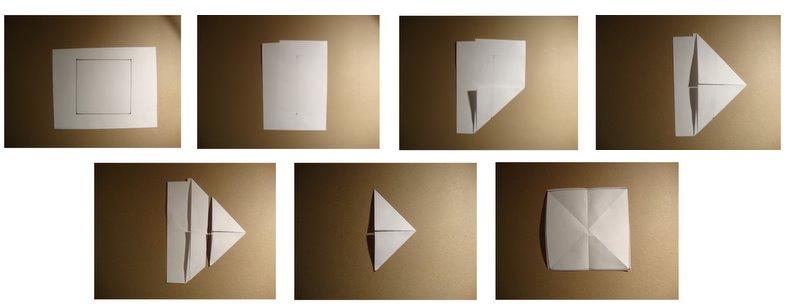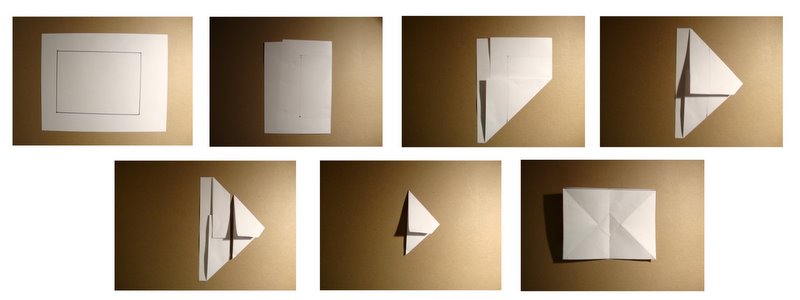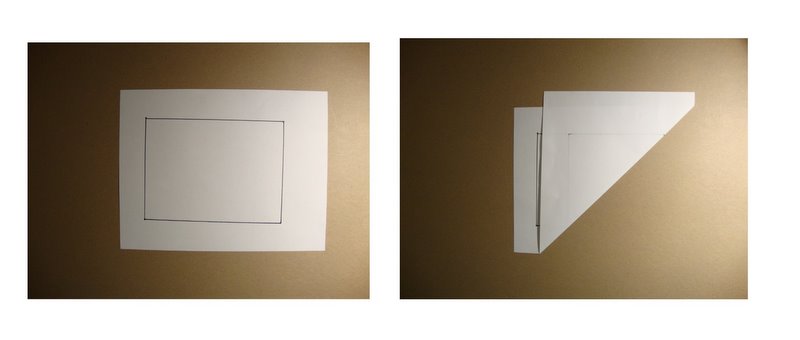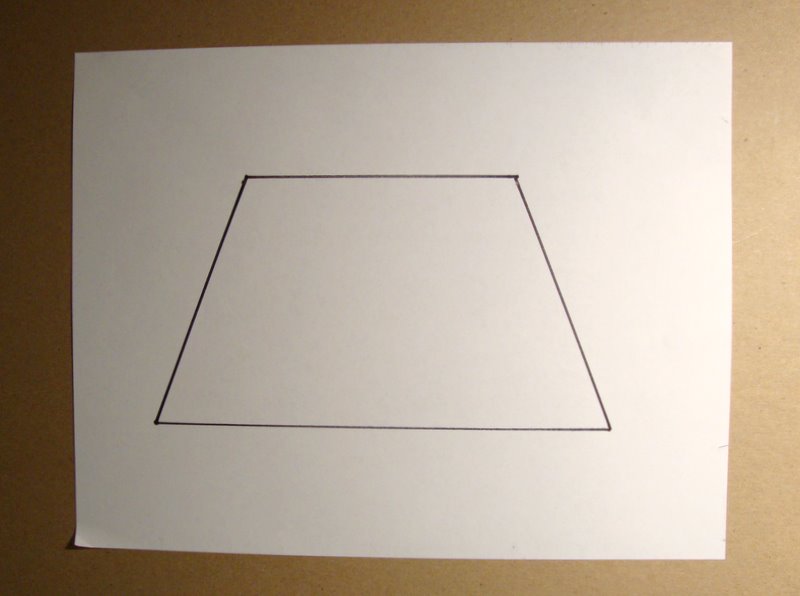Here’s another introduction to the one-cut challenge, this time with quadrilaterals. This is another activity for students of all ages from my Fun with Folding series, and you can try this out even if you haven’t fully explored the one-cut challenge with triangles.
Recall that in the one-cut challenge, your task is to produce the given shape as a cut-out using only straight folds and asingle straight cut.
Let’s start with a square. One simple approach is to fold the square in half, then fold the top and bottom halves up along the vertical side.

This same approach also works with rectangles.

A second approach with the square involves fewer folds. First, fold along the main diagonal, then go from there.

In addition to being a more efficient solution, and raising the general question “What is the minimum number of folds needed to produce the shape?”, this approach produces some confusing results when applied to a rectangle!

Another easy quadrilateral to work with is the isosceles trapezoid.

But watch out: an arbitrary quadrilateral poses quite a challenge!

Happy folding!
Have more Fun With Folding!
 Through Math for America, I am part of an on-going collaboration with the New York Times Learning Network. My latest contribution, a Test Yourself quiz question, can be found here:
Through Math for America, I am part of an on-going collaboration with the New York Times Learning Network. My latest contribution, a Test Yourself quiz question, can be found here:












